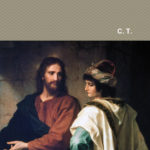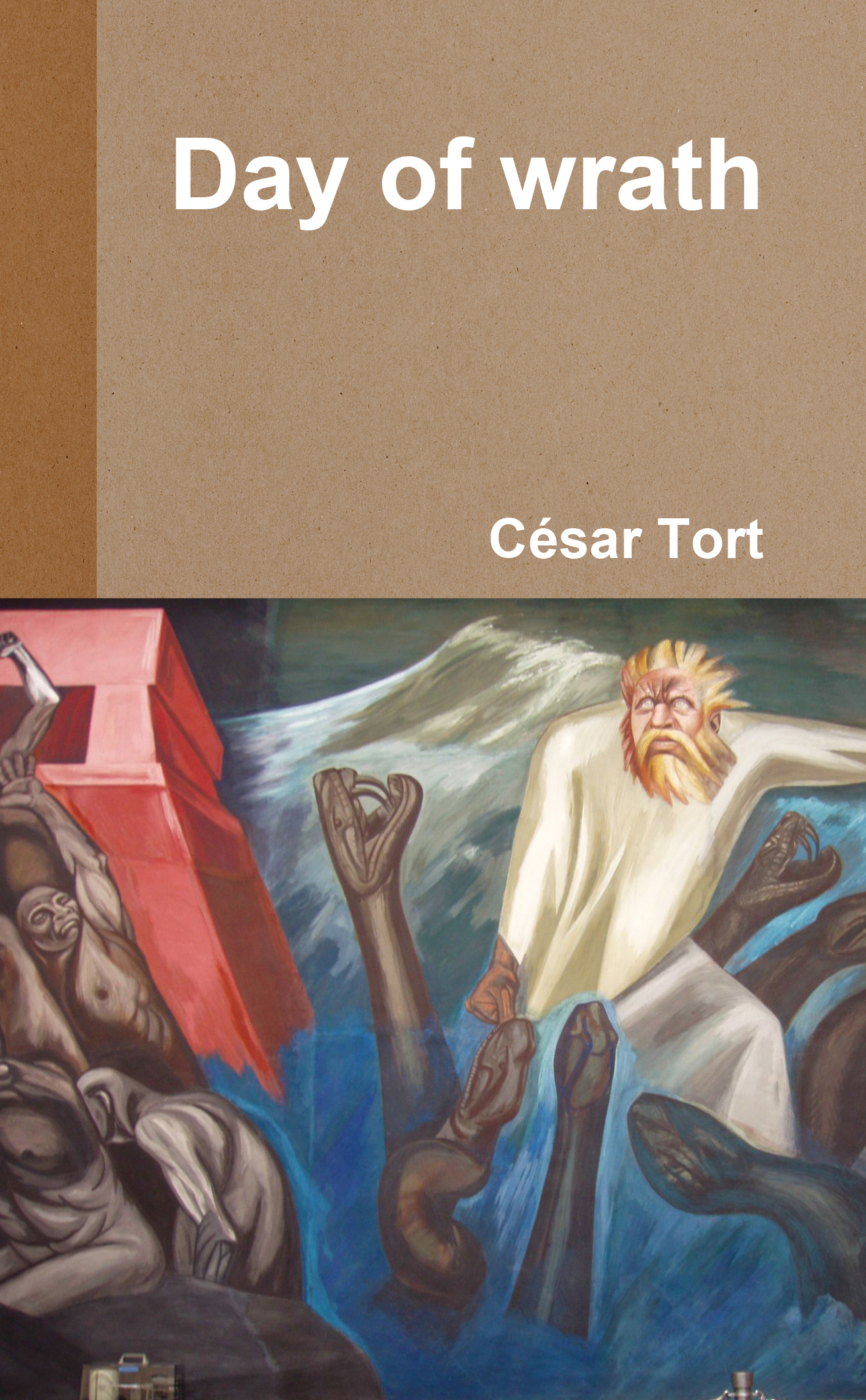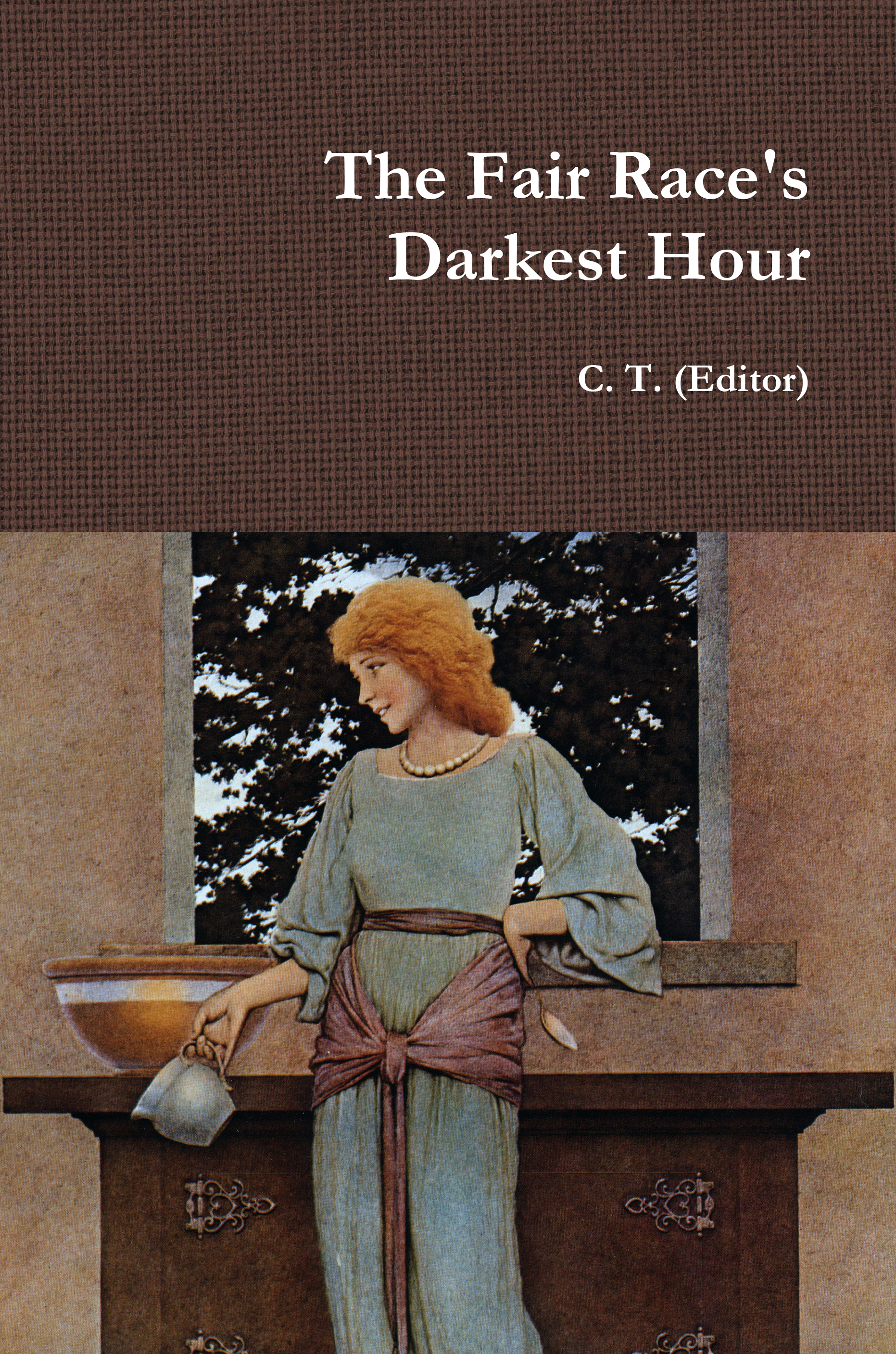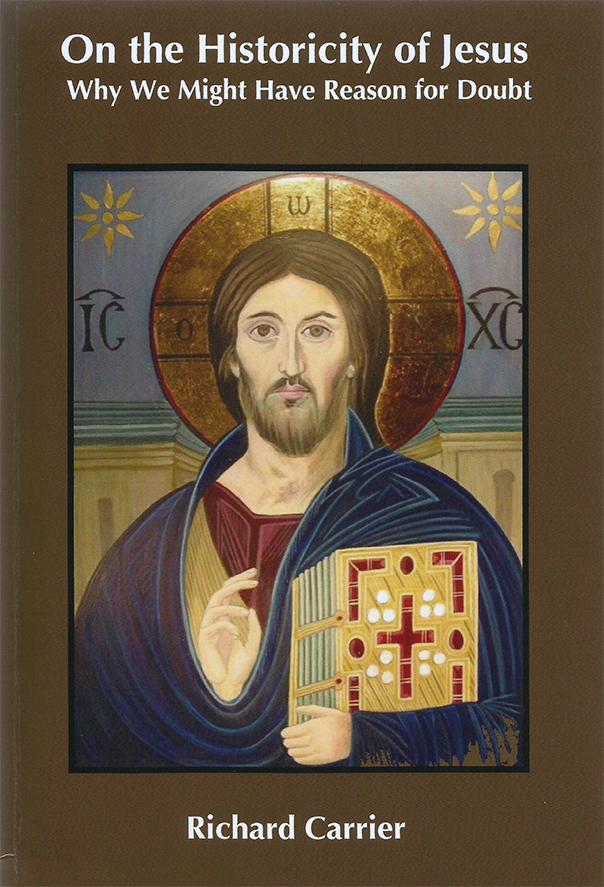the psychological Rubicon read three texts that appear in this book: a review of Hellstorm, the essay on Judea against Rome and Who We Are by William Pierce. PDF here, hard copy here.
Category: Daybreak Publishing
It is now available (here).
Must-read chapter
My main difference with Alt Right folks is that most of them cannot see a couple of elephants in their own room. As I say in the Preface to the updated edition The Fair Race’s Darkest Hour:
This collection of essays by twenty authors is the result of ten years of following closely the movement known as ‘white nationalism’ which I discovered while living in Gran Canaria: an island near Africa that belongs to Spain. My diagnosis after a decade of intensive research is that two astronomical lies spawned a narrative that has been fatally demoralising the white peoples: a millennial lie about early Christianity and a more recent lie about the Second World War.
Part I shows how Christianity, originated in Judaism, during an ISIS-like fanatical takeover of the classical world destroyed the temples, most statues and libraries in the 4th and 5th centuries of the Common Era. Through Christianity Judea thus triumphed over Rome after the disastrous Jewish-Roman wars of previous centuries. Another article of this section also mentions a gigantic genocide that the Allies perpetrated in Germany: the first Jew-wise racially awakened Aryan nation in Western history. Inspired in a passage of The Gulag Archipelago by Aleksandr Solzhenitsyn, this section also includes a subject that I consider paramount to spare the fair race from extinction: the development of the inner soul as a lesson in humility to cure the Anglo-Saxons of the false narrative with which their System bombards us over Hitler and the Nazis. Both the Judeo-Christian destruction of the Greco-Roman world, and the Holocaust of Germans in 1944-1947, are the best-kept secrets in Western history. Studying these events suggests that the current anti-white, pro-Jewish narrative is based on a fantastic inversion of two historical calamities: the ultimate cause of the West’s darkest hour.
As long as the First Amendment hangs on a thread, most racially conscious whites won’t take the trouble to download or print long PDFs. They will simply continue reading the alt-right websites. But online books like The Fair Race (PDF: here) will become handy after the System takes our sites down—if they are now properly saved in our hard disks.
The Fair Race consists of 710 pages with many colour illustrations. It is divided in ten parts and a few appendixes. New visitors who want to become regular commenters must read Part I to see the two elephants. If you find it sufficiently intriguing and don’t want to read onscreen the rest of the book, or print it for a ring binder, consider obtaining a hard copy here. One never knows when the System will drop its hammer on the Gutenberg press of the 21st century (last year, this site was taken down for a couple of days; there’s a backup of it here).
 As I continue reviewing Evropa Soberana’s essay on Sparta, this Sunday I realised that the changes I’ll make to The Fair Race will be more considerable than I originally imagined. In short, what I said in my post last Thursday, ‘Spartan break’, alters the architecture I had planned for The Fair Race.
As I continue reviewing Evropa Soberana’s essay on Sparta, this Sunday I realised that the changes I’ll make to The Fair Race will be more considerable than I originally imagined. In short, what I said in my post last Thursday, ‘Spartan break’, alters the architecture I had planned for The Fair Race.
That means I’ll have to add my differences with Soberana and others. (He once wrote that we, modern man, could follow Spartan laws as a revaluation of all values; while I believe that German National Socialism is the best paradigm.)
As this review for the PDF will take longer than expected, tomorrow I’ll resume my activities with some Christian paintings contrasted with Nietzsche’s quotes (as I was doing not long ago).
Even with this delay, hopefully, the PDF will be finished this month. Those who want to obtain a copy of the 2019 version of The Fair Race that will become obsolete once the PDF is finished can still do it: here.
Incidentally, the painting by Jacques-Louis David that I reproduced above and in my Thursday post is flawed. On this subject Soberana got it right: the early Spartans were blond, a breed of pure Dorians uncontaminated with Meds.
P.S. The old sticky post with links to the ‘Rome & Judea’ essay and the Hellstorm review—the first section of the PDF—can be seen: here.
Still busy
The programmed WordPress software closes comments of a post after a week. This means that my post of last Monday, ‘Busy for proof reading’, will be closed today after 2:00 P.M.
I am still busy reviewing the book, especially the Spanish-English translated essays of Evropa Soberana.
Once the PDF of the whole book is ready, I will replace the sticky post for another one. I will also delete the current edition of the ‘Rome vs. Judea’ essay because, after my revision, it has become obsolete.
Disclaimer of March 2020:
I recently changed my mind and used the title ‘From Jesus to Hitler’ to refer not only to this slim corollary, but to all my eleven books. The book below described is now titled The Grail (El Grial in Spanish).
______ 卐 ______
 Finally, the third and last book of my trilogy is available for one hundred dollars. The reason for the high price is that in this final book I tell intimate things. If any fan reads Spanish and wants to read me for a more reasonable price, contact me by email (scroll down the page until you see ‘contact’ on the sidebar). The following is my translation of what appears on the back cover of the book:
Finally, the third and last book of my trilogy is available for one hundred dollars. The reason for the high price is that in this final book I tell intimate things. If any fan reads Spanish and wants to read me for a more reasonable price, contact me by email (scroll down the page until you see ‘contact’ on the sidebar). The following is my translation of what appears on the back cover of the book:
From Jesus to Hitler is the continuation of Vol. I, Whispering Leaves, and Vol. II, Will You Help Me? (*)
From Jesus to Hitler is a collection of auto-biographical vignettes and hard reflections on what has already been written: questions that had remained in the inkwell of the previous volumes.
The author of this trilogy (a trilogy that together represents 1,600 pages) is the first autobiographer who, in all seriousness, elaborates a philosophy in which the very legitimacy of the human species is questioned. If mankind deserves to exist from the moral point of view, it will have to eliminate the most primitive version of humans in order to give birth to a new man whose empathy for children and animals is, indeed, upstanding.
In the empirical world, such a transvaluation of all values can only be reflected by replacing the archetype of the nonexistent Jesus of Nazareth with that of a man who did exist: Adolf Hitler.
Tomorrow I will translate into English a book passage for this site.
______________
(*) Not sure if Whispering Leaves sounds well in English. Listening to the Wind Between the Leaves provides the idea, but it would be a long title. (Incidentally, about the other title, Will You Help Me?, it’s not me the one who a powerful reader of the future will have to help.)
Proof reading
These days I’m still busy reviewing the syntax of From Jesus to Hitler before I send the manuscript to the printers.
I recently flipped through the copy of the 2014 edition of The Fair Race that I own and was surprised that, since that year, I have eliminated no less than… fifty essays!
Many of the removed essays were brief, as the 2014 edition has 432 letter-size pages. Unlike that clumsy size for the first edition, the most recent ones of The Fair Race are of regular size for printed books. The 2019 edition for instance (pic above) contains 580 pages.
In the prologue of this last edition I mention the impact that, since the end of last year, Richard Carrier’s book has caused in my vision about the historicity of Jesus. For the same reason, I removed a footnote I had added, in the 2018 edition, within Evropa Soberana’s essay, ‘Rome vs. Judea; Judea vs. Rome’. On that note, now obsolete, you see that the previous year I still believed that there could have existed an ordinary Jew who became deified by the primitive Christian community. Now I believe that the whole story about Jesus was an invention of Mark the Evangelist. To understand the whys see the bold letters in my first essay-review articleof Carrier’s book.
Almost ten years ago I discovered the literature of white nationalism, when I lived in the island Gran Canaria, Spain. As can be seen in the metamorphosis recorded in the several editions of The Fair Race, with those 50 eliminated essays (as well as adding other essays), I constantly sharpen my vision of the world. Given my perfectionism, and that I am interested that new visitors of this site open the updated PDF of Soberana’s essay, I have deleted the old PDF of ‘Rome vs. Judea; Judea vs. Rome’ that contained that obsolete footnote. Instead, in the sticky post I have linked the version of Soberana’s essay that now appears in the print edition of 2019, the version without that footnote (see the first comment below).
Such perfectionism has a setback, of course. As I had been linking the old PDF in several entries and even in comments in other forums, when they click on my old links no document will show up. However, the most updated version of Soberana’s essay will always be linked in the sticky post of this site.
If there is a book that now contains the crème de la crèmeof the literature in favour of the 14 words, it is the latest edition of The Fair Race.
Finally, the abridged translation of Karlheinz Deschner’s book on the history of Christianity is available in printed form (here).
This January, in a discussion thread at The Occidental Observer, Karl Nemmersdorf, the Christian author of the featured article, told me ‘Um… no, I don’t follow your blog. Please let me know, however, if you supersede St. Paul, St. Augustine, St. Aquinas…’
In other words, these guys are so giants that I could not possibly mess with their divine wisdom. But however erudite Nemmersdorf may be in traditional Catholic literature, he is ignorant about the real story of his religion. His ignorance is explainable because only until very recently did someone turn his life into the encyclopaedic mission of uncovering the criminal history of Christianity. Apparently, white people had been unable to read an encyclopaedic work about real Church history for the simple reason that it didn’t exist before Deschner.
The fact is that the Big Guys mentioned by Nemmersdorf, Paul (recently discussed in this site in several posts), Augustine and Aquinas, were evil men. And evil men were also the church doctors in Augustine’s times, Athanasius and Ambrose, as demonstrated by Deschner.
Remember that I offered my opinion on a recent article by Andrew Joyce about Jewish psy-ops: they have infiltrated our educational system in order to brainwash generations of white children. Well, although Ambrose probably was not Jewish he was not white either, as can be seen in this ancient mosaic. In a passage from this first translated volume, Deschner talks about the psy-ops that this non-white doctor used to brainwash the Roman princes:
Bishop Ambrose saw the sovereigns daily. Since when Valentinian II was proclaimed Augustus (375) he was barely five years old, his tutor and half-brother Gratian had just turned sixteen and the Spanish Theodosius was at least a very determined Catholic, the illustrious disciple of Jesus could handle perfectly their majesties. Valentinian I died a few years after Ambrose’s inauguration. His son Gratian (375-383), of just sixteen years of age, succeeded him on the throne.
The emperor, blond, beautiful and athletic had no interest in politics. ‘I have never learned what it means to govern and be governed’ (Eunapius). He was a passionate runner, javelin thrower, fighter, rider, but what he liked most was killing animals. Neglecting the affairs of state, every day he killed countless of them, with an almost ‘supernatural’ ability, even lions, with a single arrow.
Note how this is eerily similar to contemporary Aryan frivolity in extreme sports—at the same time that the Jews plot how to exterminate them! (which is why we speak about an ‘Aryan question’ beside the ‘Jewish question’).
In any case, he also prayed every day and was ‘pious and clean of hearing’, as Ambrose affirmed: ‘His virtues would have been complete had he also learned the art of politics’. However, this art was practiced by Ambrose for him. Not only did he personally guide the young sovereign, effectively since 378: he also influenced his government measures. At that time the sovereign had promulgated, by an edict, precisely tolerance towards all confessions, except a few extremist sects. However, Ambrose, who four years before was still unbaptized, hastened to write a statement, De fide ad Gratianum Augustum (Faith for Gratian), which he quickly understood.
As soon as Gratian himself arrived at the end of July 379 in Milan, neutral as he was from the point of view of religious policy, he annulled on August 3, after an interview with Ambrose, the edict of tolerance promulgated the year before.
The Greco-Roman religion, reviled as ‘pagan’ by Christian Newspeak, was a religion originated by pure whites (see the articles of Evropa Soberana in The Fair Race). Eventually, the white religion was prohibited and the Jewish god imposed on all Roman citizens. A few pages later, Deschner tells us:
The young Gratian at first had given a good treatment to the ‘pagans’, but he learned from his spiritual mentor ‘to feel the Christian Empire as an obligation to repress the old religion of the state’ (Caspar).
Other early Christian writers were most likely ethnic Jews, as can be guessed when pondering on how they avenged the destruction of the Temple in Jerusalem a few centuries earlier:
Lactantius [an early Christian author who became an advisor to the first Christian Roman emperor, Constantine I] is the one who then states that the sovereigns of the gentiles [emphasis added] were ‘criminals before God’, and he celebrates that they have been ‘exterminated from the root with all their type’. ‘Now those who pretended to defy God are laid prostrate on the ground; those who knocked down the Temple were slow to fall, but they fell much lower and had the end they deserved’.
Judeo-Christianity conquered the Roman Empire because the empire had become the melting-pot for non-white peoples, Jews included, who took advantage of the Roman upward mobility after the old religion became obsolete. This site, The West’s Darkest Hour is based on a passage from William Pierce’s Who We Are: that the ancient Greeks and Romans should have gotten rid of non-whites instead of using them as slaves or second-class citizens. If pre-Christian emperors had taken heed of a Cassandra prophecy, what Deschner says would not have occurred:
Constantine dedicated ten years to rearmament and propaganda in favour of Christianity as in the East; for example in Asia Minor, half of the population was already Christian in some areas [i.e., non-white]. After those ten years he rose again in search of the ‘final solution’.
That the earliest Christians were not white but fully Semitic is apparent in the footnotes below these maps provided by Evropa Soberana. We can assume that by the time of Constantine most Christians were also non-white, as Christians preached slave morality, blessed are the poor, etc. But I would like to continue to respond to the erudite Christian authors and commenters at The Occidental Observer. Not only St. Ambrose was non-white but St. Augustine was not white either (scholars generally agree that Augustine’s parents were Berbers), and probably the other great Church doctor of the time, St. Athanasius, was another non-white. Deschner wrote:
Probably like Paul and like Gregory VII, Athanasius was short and weak; Julian calls him homunculus. However, like Paul and Gregory, each one of them was a genius of hatred.
This suggest that Athanasius did not belong to the handsome Latin race (‘Aryan race’ the Nazis would say) to which Emperor Julian belonged. Like Nemmersdorf , Lew Wallace, author of the huge bestseller Ben-Hur: A Tale of the Christ, did not admire Julian but the Christian emperors. What white nationalists ignore is that, without millions of useful idiots like this pair, the Jews would never have taken over the United States. These are the final words of Ben-Hur:
If any of my readers, visiting Rome, will make the short journey to the Catacomb of San Calixto, which is more ancient than that of San Sebastiano, he will see what became of the fortune of Ben-Hur, and give him thanks. Out of that vast tomb Christianity issued to supersede the Caesars.
The reading of Deschner’s books, and I mean not only this first translated volume but the next ones, will convince the honest reader that—contra Wallace—compared to the monstrous Christian emperors, the pagan Caesars were almost saints. If life allows, we will reach the pages where Deschner debunks the last doctor of the church mentioned by Nemmersdorf, Thomas Aquinas, but that is still too many books ahead.
For the moment, this is the Contents page of our first translation of:
Christianity’s Criminal History
Editor’s preface
Introduction
The Early Period: from Old Testament origins to the death of Saint Augustine
Forgeries in the Old Testament
The bibles and some peculiarities of the Christian Bible
The five books of Moses, which Moses did not write
David and Solomon
Joshua and Isaiah
Ezekiel and Daniel
The Jewish apocalyptic
Portrayals of the biblical female world
Opposition to the Old Testament
Forgeries in diaspora Judaism
Forgeries in the New Testament
The error of Jesus
The ‘Holy Scriptures’ are piled up
God as the author?
Christians forged more consciously than Jews
Neither the Gospel of Matthew, nor the Gospel of John, nor John’s Book of Revelation come from the apostles to whom the Church attributes them
Forged ‘epistles of Paul’
The Second Epistle to the Thessalonians
Colossians, Ephesians and Hebrews
Forged epistles of Peter
Forged John and others
Interpolations in the New Testament
The invention of Popes
Neither Jesus instituted the papacy nor Peter was bishop of Rome
There is no evidence of Peter’s stay and death in Rome
The story of the discovery of Peter’s tomb
The list of fabricated Roman bishops
Background in the Old Testament
Moses and the Book of Judges
The ravages of David and the modern translators
The sacred warmongering of the Maccabees
The Jewish War (66-70)
Bar Kokhba and the ‘Last War of God’ (131-136)
The Jewish religion, tolerated by the pagan state
Early Christianity
Interpretatio Christiana
‘Orthodoxy’ and ‘heresy’
First ‘heretics’ in the New Testament
Thirteen good Christians
Saint Jerome and Origen
The persecution of the Christians
Anti-Hellene hatred in the New Testament
The defamation of the Greco-Roman religion
Celsus and Porphyry
The persecution of the Christians
Most of the written statements about the martyrs are false, but all of them were considered as totally valid historical documents
The Roman emperors viewed retrospectively
Saint Constantine: The First Christian Emperor
War against Maxentius
War against Maximinus
War against Licinius
The Catholic clergy, increasingly favoured
Constantine as saviour, deliverer, and vicar of God
No more a pacifist Church
Christian family life and savage criminal practices
Constantine against Jews and ‘heretics’
Constantine against the Greco-Roman culture
Interim report
Persia, Armenia and Christianity
Constantine’s successors
The first Christian dynasty founded on family extermination
First wars among devout Christians
Constantius and his Christian-style government
A father of the Church who preaches looting and killing
First assaults on the temples
Julian
Hecatombs under the pious Gallus
Emperor Julian
Christian tall stories
After Julian
Rivers of blood under the Catholic Valentinian
Trembling and gnashing of teeth under the Arian Valens
Athanasius, Doctor of the Church
The complicated nature of God
It was not fought for faith but for power
The Council of Nicaea
Character and tactics of a Father of the Church
The death of Arius
The ‘battlefield’ of Alexandria
Antioch and Constantinople
Shelter with a twenty-year-old beauty
Ambrose, doctor of the Church
Non-white Ambrose drives the annihilation of the Goths
Emperor Theodosius ‘the Great’
Against the Hellenist religion
The Father of the Church Augustine
‘Genius in all fields of Christian doctrine’
Augustine’s campaign against the Donatists
The overthrow of Pelagius
Augustine attacks Greco-Roman culture
Augustine sanctions the ‘holy war’
The 2018 (revised) edition is available
through Amazon Books: here.
 Preface to the 2018 edition
Preface to the 2018 edition
Day of Wrath is the companion of The Fair Race’s Darkest Hour, where I collect the essays of other authors for readers who want to save the white race from extinction.
Under the covers of this book I include six Spanish-English translations from chapters of my volumes Hojas Susurrantes and ¿Me Ayudarás? [see the bottom of this page] plus a fantastic blog essay that gave the title to this book. The following is a brief recapitulation of the seven texts that appear here.
I wrote “Dies Irae” at the end of 2012 as a blog entry for The West’s Darkest Hour. Since it refers to the 14 words, to contextualize this concept it is advisable to become familiar with the viewpoint of white nationalists in The Fair Race.
The rest of the book is not composed of blog entries.
Hojas Susurrantes consists of approximately 256,000 words. It is the first volume of my philosophical autobiography. In 2006 I wrote the text reproduced here, “Unfalsifiability in Psychiatry”: a fraction of the second chapter of Hojas. In that essay, I try to show that the profession called psychiatry does not meet the scientific requirement to distinguish it from pseudo-sciences.
I finished the fourth section of Hojas in 2008. In the present translation, I interpolate brackets in italics, and also explaining passages, for those who have not read my volumes in their original language. The texts “The Trauma Model,” “The Feathered Serpent” and “Psychohistory” are taken from this fourth section of Hojas. In these chapters I lay the foundations of the trauma model: the paradigm opposed to the pseudoscientific medical model of mental disorders taught in the psychiatry departments. The aim of the trauma model is to demonstrate that abusive parents have driven their children mad throughout prehistory and recorded history.
¿Me Ayudarás? is the second volume of my autobiography. “God” is a translated section from its first chapter and “Dying in a Louis XVI-style bedroom” is taken from the very introduction. Like the other chapters, it has been adapted for this English translation. This last text is a portrait of my soul that connects with the first essay, “Dies Irae,” day of wrath in Latin.
9 August 2018




